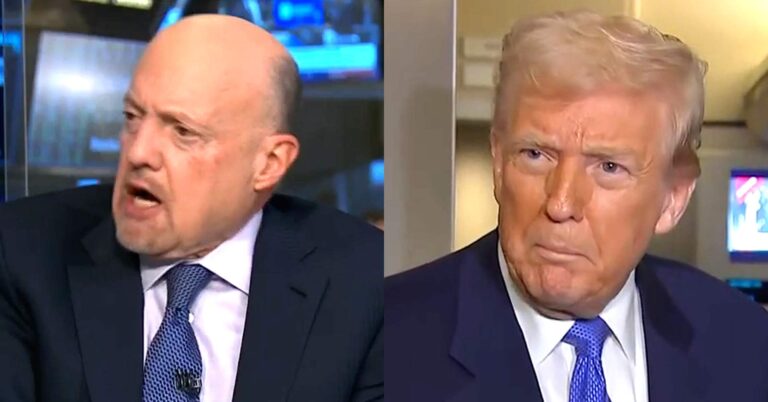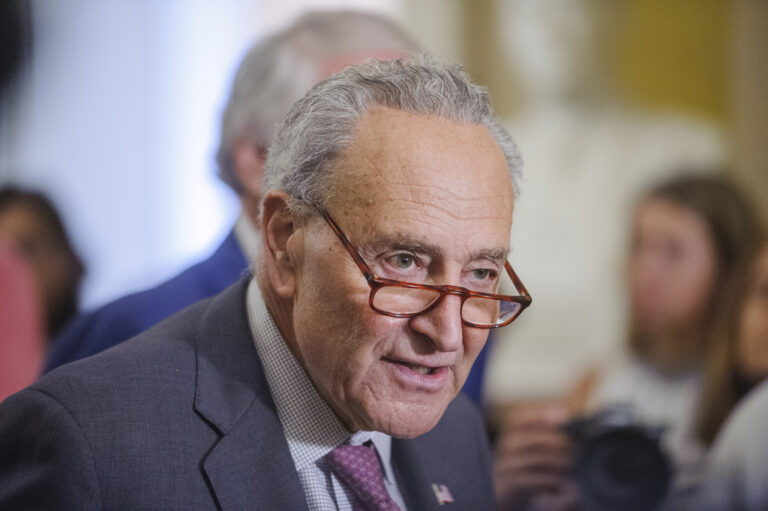President Donald Trump is sending Congress a $4.1 trillion spending plan that relies on faster economic growth and steep cuts to programs supporting low-income individuals to balance the government’s books over the next decade.
The proposed budget, for the fiscal year that begins Oct. 1, was being delivered to Congress Tuesday, setting off an extended debate in which Democrats are already attacking the administration for trying to balance the budget on the backs of the poor. Lawmakers from both parties have said major changes will be needed as the measure moves through Congress.
The proposal projects that this year’s deficit will rise to $603 billion, up from the actual deficit of $585 billion last year, But the document says if Trump’s initiatives are adopted the deficit will start declining and actually reach a small surplus of $16 billion in 2027. However, that goal depends on growth projections that many private economists view as overly optimistic.
The government hasn’t run a surplus since the late 1990s when a budget deal between Democrat Bill Clinton and congressional Republicans combined with the longest U.S. economic recovery in history produced four years of black ink from 1998 to 2001.
During the campaign, Trump attacked the weak economic growth of the Obama years, and pledged that his economic program would boost growth from the lackluster 2 percent rates seen since the recovery began in mid-2009. Trump’s new budget is based on sustained growth above 3 percent, sharply higher than the expectations of most private economists.
“The president believes that we must restore the greatness of our nation and reject the failed status quo that has left the American dream out of reach for too many families,” the administration said in its budget which was titled, “The New Foundation for American Greatness.”
According to budget tables released by the administration, Trump’s plan cuts almost $3.6 trillion from an array of benefit programs, domestic agencies and war spending over the coming decade — an almost 8 percent cut — including repealing and replacing Obama’s health law, cutting Medicaid, eliminating student loan subsidies, sharply slashing food stamps, and cutting $95 billion in highway formula funding for the states. Cuts to a popular crop insurance program have already landed with a thud.
A program designed to move people receiving Social Security disability payments back into enter the workforce is politically toxic as well. Food stamp cuts would drive millions from the program. Administration officials defended these measures as a way to reduce government support they contend is keeping millions of Americans out of the work force and thus reducing economic growth.
“We need people to go to work,” White House Budget director Mick Mulvaney told reporters at a briefing Monday. “If you are on food stamps, we need you to go to work. If you are on disability and you should not be, we need you to go back to work.”
Trump’s plan projects that the boost in economic growth it will engender will result in more than $2 trillion in unspecified deficit savings over the coming decade from “economic feedback,” a major component in achieving the program’s pledge of achieving balance by 2027.
The budget does feature one major new domestic initiative — offering paid parental leave at a projected cost of $25 billion over the next decade. The new program has been championed by Trump’s daughter, Ivanka.
Trump would keep campaign pledges to leave core Medicare and Social Security benefits for the elderly alone but that translated into even deeper cuts in programs for the poor such as Medicaid and food stamps.
Medicaid, the government insurance program for the poor and many disabled Americans, would be cut by more than $600 billion over 10 years by capping payments to states and giving governors more flexibility to manage their rosters of Medicaid recipients. Those cuts go on top of the repeal of Obamacare’s expansion of the program to 14 million people and amount to, by decade’s end, an almost 25 percent cut from present projections.
Likewise, a 10-year, $191 billion reduction in food stamps — almost 30 percent — far exceeds prior proposals by Capitol Hill Republicans. The food stamp program serves about 42 million people.
Other cuts in Trump’s budget include reductions in pension benefits for federal workers, in part by requiring employees to make higher contributions. In agriculture, the proposed budget would limit subsidies to farmers, including for purchasing crop insurance, a move already attacked by farm state lawmakers.
On taxes, Trump promises an overhaul that would cut tax rates but rely on erasing tax breaks and economic growth to avoid adding to the deficit. It would create three tax brackets — 10 percent, 25 percent and 35 percent — instead of the current seven, but specific details were left to further negotiations with Congress.
The new budget plan builds on Trump’s March proposals, adding details to his goal of boosting defense spending by $54 billion, a 10 percent increase, for this year, with that boost financed by an equal cut to nondefense programs.
Mulvaney said that part of the savings, listed in the budget as $1.4 trillion over 10 years, would come from a “two-penny plan” which will cut non-defense discretionary spending by 2 percent each year over the next decade.
Such cuts — which include “zeroing out” programs like community development block grants and heating aid to the poor — were ignored when Congress earlier this month wrapped up a massive spending bill for the current year.
There’s little sign lawmakers, who panned the March plan, will have a change of heart now, especially with Trump’s administration in turmoil and his poll ratings at historic lows.
(AP)











